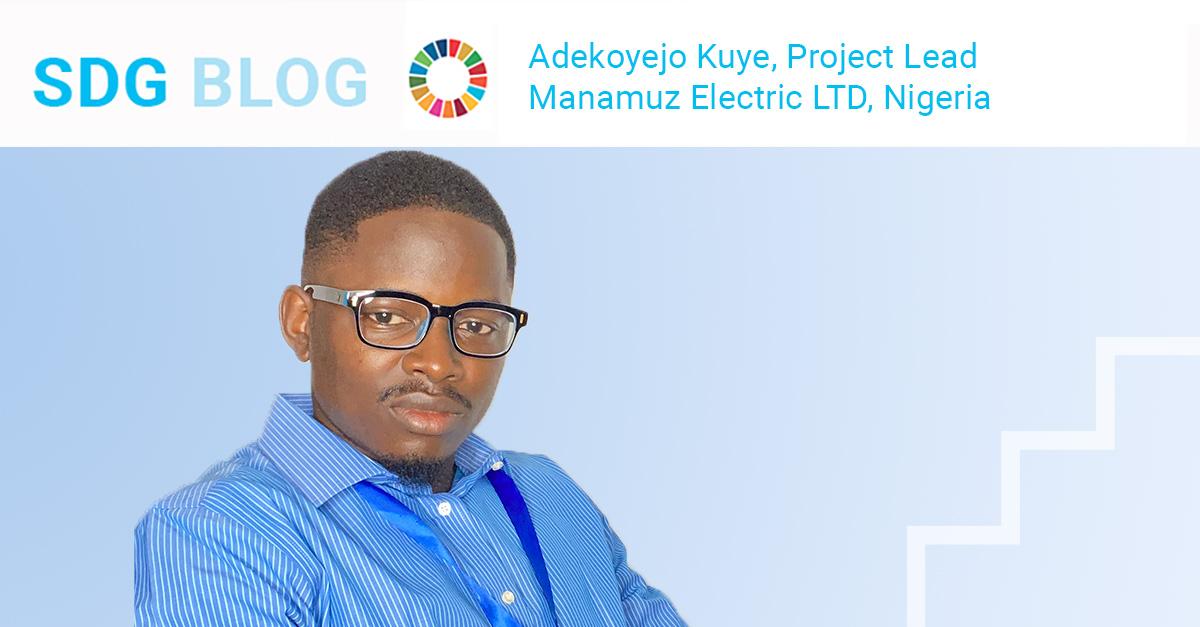SDG Blog

The cool solutions to Africa’s burning problems
By Adekoyejo Kuye, Project Lead, Manamuz Electric LTD
One third of the food produced globally for human consumption never gets to the final consumer, estimates the Food and Agricultural Organization of the United Nations (FAO). In Africa, the numbers are even more alarming, an average of 50 per cent of what is produced in African countries is wasted – an amount that could feed 300 million people. This is mainly caused by the huge energy gap and the inefficient supply chain infrastructure within the agricultural sector.
In most African countries, agriculture employs an average of 54 per cent of the working population. In sub-Saharan Africa alone, more than 60 per cent of the population are smallholder farmers. If we can innovate for smallholder farmers to drive a sustainable and robust agricultural sector, it will fast-track the development of Africa as a whole.
Innovation may not necessarily mean new inventions or technologies, but it could be combining different existing clean technologies and sustainable business models. Smallholder farmers are the backbone of national and regional food systems on the African continent. With the right technology, they can ensure food availability for themselves and their regions.
Problems: One of the major problems we are facing in the agricultural sector is the lack of sustainable cold chain infrastructure. The majority of farmers are located in rural communities that have little or no access to electricity to power cold chains. Making use of conventional cold chain facilities is inefficient, unreliable, and far more expensive because they depend largely on fossil fuels with exorbitant operational costs.
At a time when we are aiming to decarbonize the energy sector to prevent further climate degradation, fossil fuel-powered cooling solutions are not an option for a sustainable future in agriculture.
To build a sustainable cold chain infrastructure, we need to close the energy gap in the agricultural sector by creating a nexus between the renewable energy industry and the agricultural sector.
With sustainable cold chain infrastructure, farm produce can have its shelf life increased from a few hours to several weeks or months. In sub-Saharan Africa, only 3 per cent of the total agricultural output is refrigerated at the first mile. About half of what is produced is wasted and largely undervalued, this is what keeps farmers and agribusinesses poor.
Another problem is the lack of an efficient supply chain. There is a need to digitize the supply chain of perishable foods to make it more efficient as this shortens the time it takes for harvested produce to get to the final consumer.
Solution: Sustainable cold chain infrastructure and an efficient supply chain network powered by clean and affordable technology are required by grass-root farmers and vendors to solve the problem of food waste. There is also a need for hygienic and sustainable food logistics infrastructure that digital platforms can build upon.
Solving the problem of post-harvest losses will:
- Reduce food waste emissions (SDG 13): according to the FAO, Global food waste generates 4 Gigatonnes of greenhouse gas emissions annually. This is almost as much as all the emission from road transport globally.
- Reduce poverty and hunger (SDG 1, 2): more jobs will be created, especially for women. Eliminating food loss will also drive agricultural production and food availability.
- Ensure access to affordable, sustainable, and clean energy (SDG 7): powering cold chains with modern energy will reduce operational cost, increase profitability and ensure cold chain facilities are more accessible to farmers.
- Increase industry innovation and infrastructure in the agricultural sector. (SDG 9)
- Ensure sustainable production and consumption pattern. (SDG 12)
At Manamuz Electric, we have come up with the invention of sustainable cold chain solutions and transport systems that are completely powered by solar energy. We have designed a sustainable and efficient refrigeration system that is optimized for the African perishable agricultural supply chain. We call it the Coldbox Store.
It is an integrated cold chain that boosts the resilience of the perishable food supply chain. In addition, it directly links farmers to vendors and consumers thereby shortening food supply chains. This is possible because it provides third-party cold chain logistics infrastructure for farmers, market sellers, e-commerce platforms, and exporters.
Presently, we have deployed our first Coldbox Store at a fruit and vegetable market in Enugu State, Nigeria and locals are already seeing significant positive impacts. With series‑A funding, we plan to set up a manufacturing plant in Nigeria to mass-produce these solutions and make them readily available.
We are already taking steps to bring about sustainable agriculture in Nigeria and Africa at large, we urge the rest of the world, especially young people all over to start innovating for smallholder farmers to end post-harvest losses and food spoilage. Sustainable agriculture will revive the economies of most African countries and help in the recovery from the COVID-19 pandemic.
We all need to act in this decade of action. We have what it takes to bring about change, all we need to do is take action.
* The views expressed in this blog are the author’s and do not necessarily reflect the opinion of UN DESA.
 Welcome to the United Nations
Welcome to the United Nations